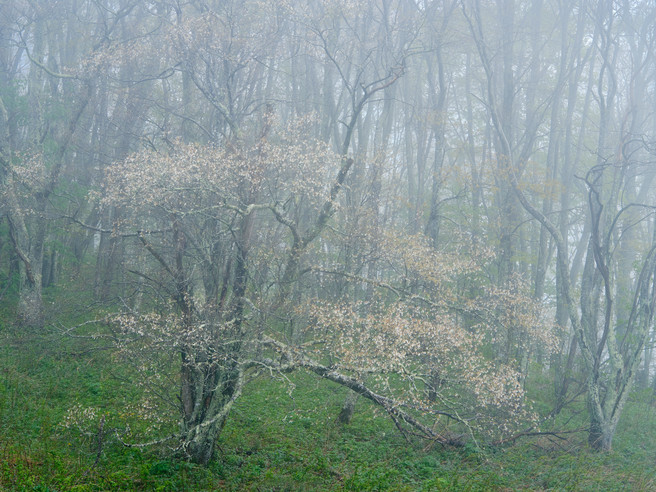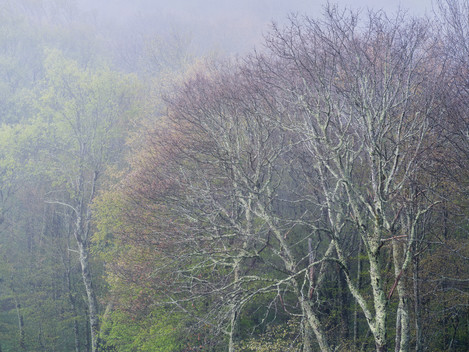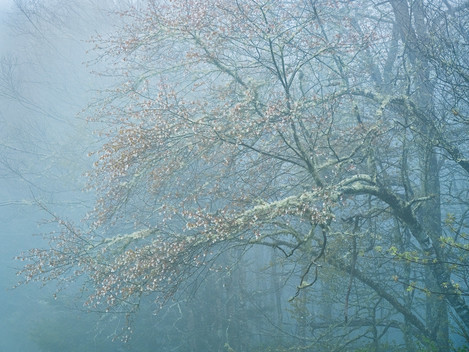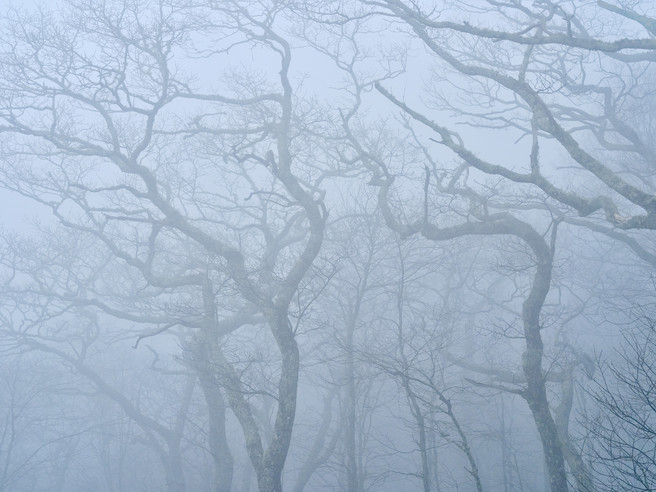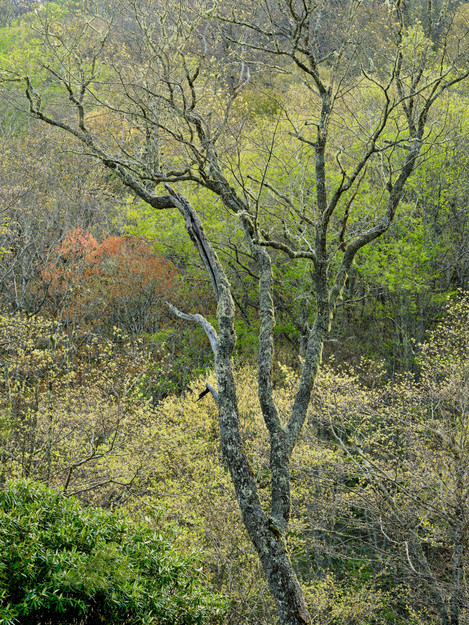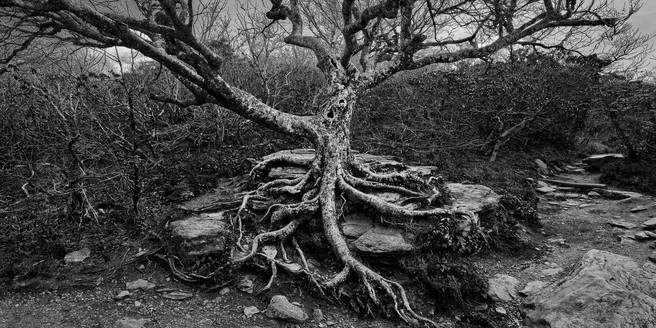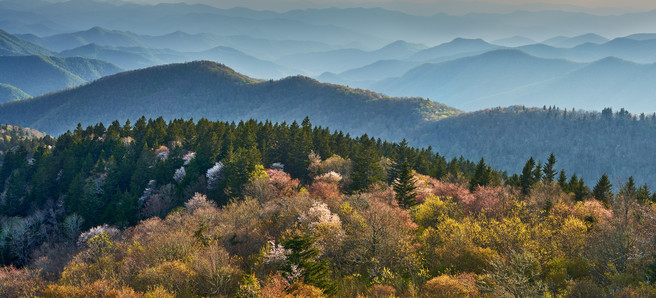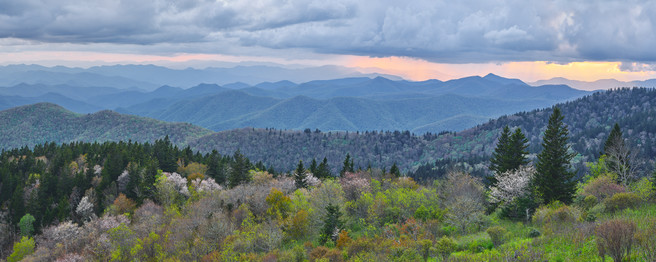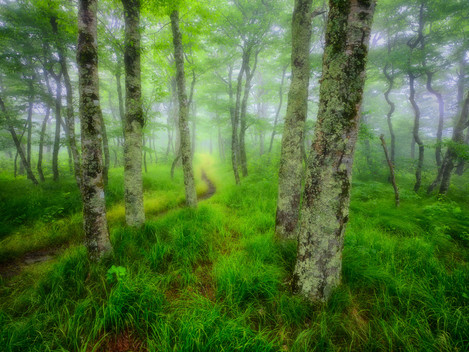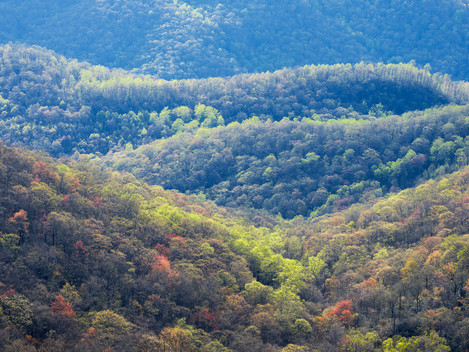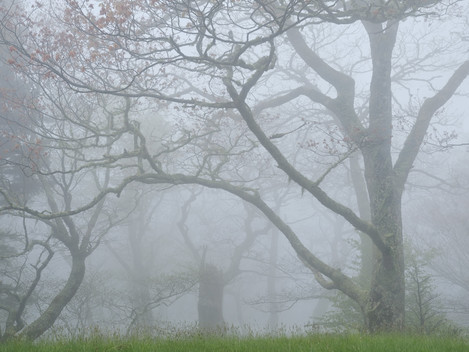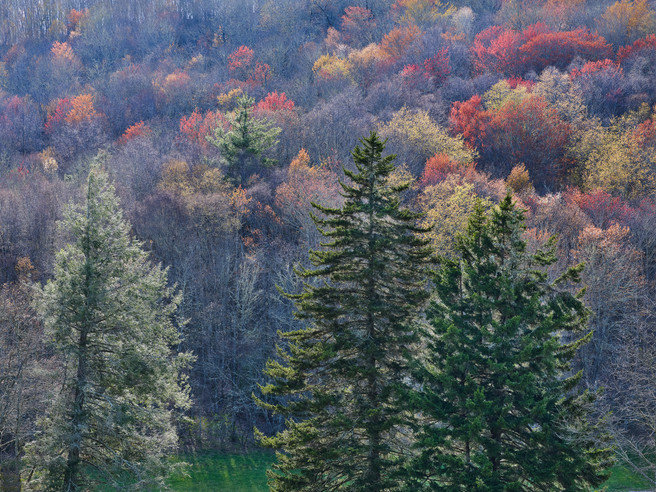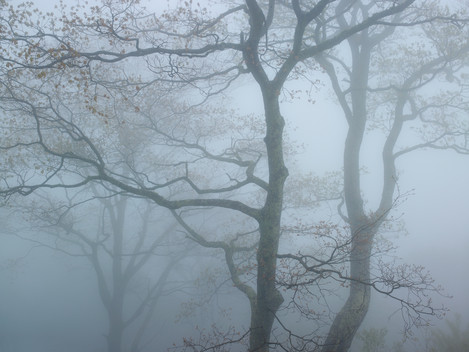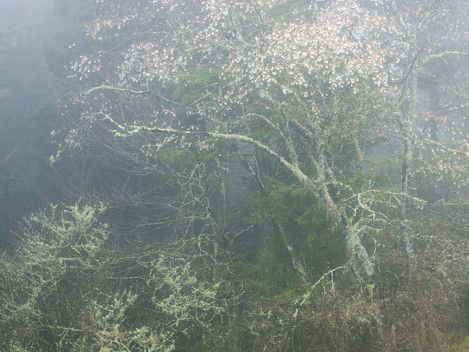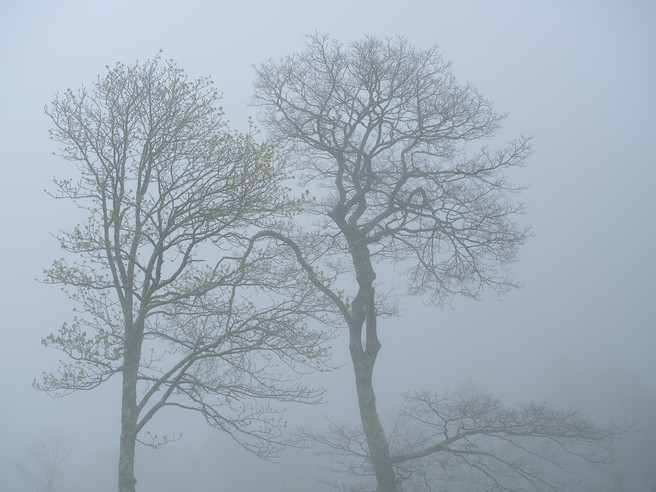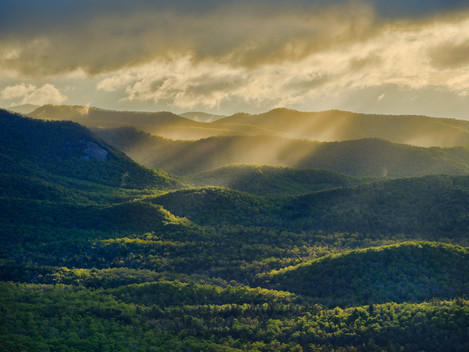The Softness of Spring

Nye Simmons
My roots are in large format film using 4x5, 5x7 and 617 film. Like many (most?) of you, I have transitioned to digital imaging, now with the FujiFilm GFX100s. In addition to publishing my books and calendars, I offer small group photography workshops, both scheduled and bespoke, with an emphasis on photographic seeing and field techniques. I am on the web at Instagram at
Instagram.
I am the author or co-author of 6 books and I was a contributing writer-photographer for the Ultimate Guide to Digital Nature Photography. I have been published in various regional and national magazines including National Geographic Adventure and National Geographic Traveler. I live in Knoxville, TN in the shadow of the Great Smokies. My latest book is an updated and revised guide — The Greater Smoky Mountains Photographer’s Guide.
The Blue Ridge Parkway is a 469-mile-long roadway and corridor connecting two National Parks, Shenandoah and the Great Smoky Mountains. It is not a national park but a national parkway, which is more of an administrative distinction than an interest for most visitors. It is, however, the most visited unit in the national park system. Fortunately, the visitation is spread over such a large area that it is rarely oppressive; indeed, the visiting photographer rarely notices passing traffic.
This may be an unknown area for many readers, so I have included a few location specific notes to help orient you. As I write repeatedly, the entire Parkway offers one continuous photo op. You just must be there in the right light; a spot that appeared mundane in the wrong light springs to life in favourable conditions.
I live closest to the southern end of the Blue Ridge Parkway, which, fortunately for me, is, I think, the most scenic part. The spur road leading to Mount Mitchell at milepost (hereafter MP) 355.4 south to the boundary of Great Smoky Mountains National Park at MP 469 holds an infinite opportunity for the photographer and is the basis for this article. There are many scenic overlooks for those partial to grand scenic, but every mile contains intimate scenes waiting to be transformed into art.
With elevations ranging from 2031 feet at the boundary with the Smokies (MP 469) to 6053 feet at the Richland Balsam Overlook at MP 431.4, spring comes to the Parkway at different times starting in mid-April and the lowest levels and into mid-May at the highest bands. The first few days of May are usually consistent year to year at the 5000 foot mark where it is most glorious.
Spring colours provide a soft and gentle palette; erupting buds are everywhere, along with freshly opened leaves in their delicate hues. Serviceberry provides a delicate white accent when in bloom, and the fresh leaves have a slight orange hue. Budding maples add red and orange, sometimes out of gamut for most printers. Delicate lime green and lemon yellow abound. Oaks may not have started in early May, offering the bare bones of the forest with their muscular branches.
Weather is everything to photographers on the Parkway, even more so than in most places; a low cloud deck engulfs the ridge tops (fog for all practical purposes), creating wonderful atmospherics. How low the deck drops varies with each weather system that moves through. Play all day long if it holds. Clear skies offer the chance for back-illuminated images with colour varying from brilliant to muted. There is no “bad” light on the Parkway, just different effects and opportunities. Black and white options abound, though losing some of what is special about high country spring. Be prepared to work in rainy conditions if that is what is happening. Rain also offers its own mood and opportunity and often accompanies a low cloud ceiling, so to get the fog, you may have to get wet.
Logistics depend on many factors, mostly how far you are travelling. Locals can make day trips, and If you are prepared to camp, there are several options on and near the Parkway. There is one hotel on the Parkway itself, the Pisgah Inn, which also has a restaurant. It books months in advance. Waynesville, NC and Asheville, NC are the two most logical places to stay; the former being perhaps a bit better located as a base, the latter being a larger city with many lodging and dining options and an airport.
The Mountains-to-Sea Trail is North Carolina’s state hiking trail. It stretches 1175 miles from Clingmans Dome in the Great Smoky Mountains to Jockey’s Ridge on the Outer Banks and shadows the Blue Ridge Parkway through this section of the Parkway. You will see periodic markers showing where the trail comes onto the shoulder of the road and back in again. Enter at any of these access points for an intimate woodland experience. For more detailed information, go to https://mountainstoseatrail.org/
The Photo Experience
There are many miles of opportunity here (114, actually), and the weather changes everything. If the cloud deck is low and settled on the ridges, then many miles of foggy, misty compositions await. The mood changes when the sun comes out, at which time you must shift gears and play the light.
A word of caution: Roadside parking is allowed wherever you can get completely off the asphalt. However, care must be taken, particularly in wet conditions, not to tear up the turf. In a practical sense, this means AWD or 4WD, which is gentle on the wet ground allowing you to get back on pavement without getting stuck on wet grass, as is common with conventional 2WD.
Every picture tells a story. What follows is my story of high-country spring on the southern end of the Blue Ridge Parkway.
Clouds moved across the ridges and through the gaps in a constantly shifting display. The area around was engulfed in a thin layer of bright cloud ( fog) that created conditions reminiscent of paintings by Albert Bierstadt. The delicate blooms of serviceberry were the main draw, with bare trunks providing structure, but the light was everything. In more mundane conditions, one might ask what the fuss is all about. FujiFilm GFX100s 45-100mm zoom at 90mm f/ 11 ISO 400, 1/125 sec.
From the same location, compositions revealed themselves in a 360-degree kaleidoscope. Dense fog would have yielded an entirely different mood, though potentially as delightful. That is the great beauty of the Parkway for photographers; it is possible to visit the exact same spot repeatedly and take away different images every time. Importantly, one sometimes has only to turn around to find more opportunities. FujiFilm GFX100s 100-200mm zoom at 180 mm. f/ 11, 1/125sec ISO 400.
When in the cloud, the Parkway offers new potential at every turn. It becomes difficult to keep track of each opportunity that you wish to file away for later. The fog suits the soft delicate hues in a way that no other conditions do. Many images are not at a particular mile marker or established overlook as in this case. FujiFilm GFX100s 100-200mm zoom at 126mm f/ 11, 1/80 sec ISO 1250.
Around the next bend may be an entirely different scene. Naked beauty without the adornments of leaf or bloom, here are trees at their most basic, muscular trunks intertwined in a graceful ballet. The Blue Ridge Parkway is all about trees. FujiFilm GFX100s 45-100mm zoom, f/ 11, 1/50 sec ISO 6400. The high ISO was required because I was handholding in very low light.
Soft backlighting from thin clouds gives a slight translucence to the fresh growth. The soft red of new maple blooms adds a splash of colour. Such scenes are found at whatever bend in the road you find yourself; watch the light, and it will help to inform your search. This was handheld requiring a higher ISO to achieve a sharp image.
GFX100s with 100-200mm zoom at 140mm, f/ 16 at 1/40 second ISO 640. FujiFilm.
The extreme example of subtle colour is the complete absence of color. When there is no foliage for the color enthusiast, the bare bones make wonderful subject matter for black and white images. This was a rotational panorama using an ultrawide lens and a nodal slider on a gimbal apparatus. Next time I will hand hold it. The anchor for this image is an iconic ancient beech tree at Craggy Gardens MP 364.5, less than ¼ mile up the Craggy Pinnacle trail. It photographs well in most conditions. Sony A7R4 with Sigma 14-24mm zoom, f/ 11, 1/60 sec, ISO 125.
The Cowee Mountains Overlook MP 430.7 at 5950 feet elevation t is very popular and photographs best in the evening light. Due to its elevation, it is among the last places visited by the spring bloom. Serviceberry is the dominant tree with white blossoms as well as young leaves that are orange-red in hue. This is one of the places for fans of the grand scenic to find joy. It is considered the most photographed and iconic vista in North Carolina. On a clear day, the back illuminated foliage screams out and can rival the autumnal display. A blank sky usually has some density to avoid burning out. Rotational stitch Sony A7R4 24-105mm lens, f/ 11 1/80sec ISO 200.
The Cowee Mountains Overlook MP 430.7 at 5950 feet elevation t is very popular and photographs best in the evening light, including sunset and after. Due to its elevation, it is among the last places visited by the spring bloom. Serviceberry is the dominant tree with white blossoms as well as young leaves that are orange-red in hue. This is one of the places for fans of the grand scenic to find joy. It is considered the most photographed and iconic vista in North Carolina. On a cloudy day, the colour is more muted. Rotational stitch FujiFilm GFX50s 32-64mm zoom at 64mm f/ 15 1/5 second ISO 100.
Beech Gap in fog at Graybeard Overlook MP 363.4. — close to Craggy Gardens mentioned previously. This is one of the places where the Mountains-to-Sea Trail is most easily accessed, literally a step from the parking area. These beech gaps are dying due to a blight affecting the trees. This one has been one of the most resilient, but time is taking its toll. Often low clouds create foggy conditions, as well as valley fog clouds rising and passing over the crest. This location is to be checked when in the area. FujiFilm GFX50s 23mm lens, f/ 16 , 1/8 sec ISO 800.
The Blue Ridge Parkway provides countless views of the ridges and valleys below. As spring progresses, the ridges take on a mix of colours in many unique shapes. Different light will give different moods, here with soft backlighting. FujiFilm GFX50s with 100-200mm zoom at 130mm, f/ 11 at 1/100 second ISO 400.
Fog changes everything; the view is restricted to elements, sometimes only a few feet away, and much clutter is obscured. Moody, even spooky images can result. Roadside compositions at no place, in particular, are the norm; drive with your eyes open, and you will find them. Most will likely be unique to your day on the Parkway and your personal vision. FujiFilm GFX50s with 32-64 zoom at 54 mm, f/ 16 at 1/60 second ISO 800.
Back illuminated colour on new growth can be incandescent here at Soco Gap MP 456.2 in the late afternoon. Regardless of what light you are given, there is always something worth your time, even when conventional wisdom suggests otherwise. Simple levels and curve adjustments can put it over the top requiring judicious post processing. FujiFilm GFX50s with 100-200mm zoom at 107mm, f/ 16 at 1/50 second ISO 400.
When in the cloud, the landscape can be reduced to forms and textures with all else taken away, and the palette is quite muted. A light touch is needed in post to preserve the effect of the moment. Phase One P45 back on Mamiya 645 with 45-85mm zoom at 55mm f/ 22 1/6 sec ISO 50.
Serviceberry with lichen and moss. Conditions often impart a painterly quality to the image without having to resort to complicated post processing moves.
Phase One P45 back on Mamiya 645 body with 75-15mm lens at 90mm f/ 22 at ¼ sec ISO 100.
The structure of these trees shows through with only a hint of foliage. The asymmetrical balance was intriguing with the silhouettes of the trees against a blank background. Perhaps it went on forever? A special pas de deux in the clouds.
FujiFilm GFX100s with 100-200mm zoom at 100mm, f/ 11, 1/320 second, ISO 400
Sunbeams over backlighted ridges, as seen from Pounding Mill Overlook MP 413.2. This overlook offers many moods and compositions and should be a mandatory visit to see what seasonal treat is being offered. It offers a nearly 270 degree field of view with great variety.
So, what is it that makes the Blue Ridge Parkway so special for photographers?
It is a bit hard to put a finger on it, but on reflection, I think it is this: It is a roadway, 2 lanes wide plus a shoulder of varying width, often wider that the road itself. This provides space to back away from the trees and get some compression and isolation and a clean composition. Being deep in the woods is a wonderful experience, but often with associated clutter and too much closeness. It becomes difficult to see the trees for the forest. There is so much potential subject matter along its length that an almost infinite variety of found subjects exists in addition to the icons. There are certainly those sweeping vistas, but the real treat is the trees.
I am the author of Best of the Blue Ridge Parkway, a guide to the Parkway for photographers and outdoor enthusiasts, available in hard copy at Parkway gift shops and as an e-book on my website, www.nyesimmons.com .


